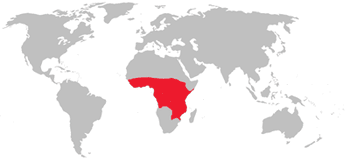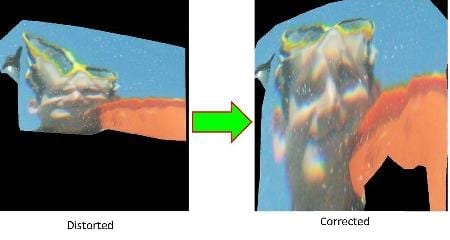
Promises to yield powerful genetic tools that could one day eliminate the disease from sub-Saharan Africa
After 10 years of research, scientists have finally been able to understand the DNA code for the devastating tsetse fly. This will help in controlling trypanosomiasis disease in livestock and sleeping sickness in humans.
According to a study published in the journal Science, the precise knowledge of the insect’s biology and physiology promises to yield powerful genetic tools that could one day eliminate the disease from sub-Saharan Africa.
The study ‘Genome Sequence of the Tsetse Fly (Glossina morsitans): Vector of African Trypanosomiasis’ states that although official reports of new infections in humans recently dropped below 10,000 per year, many cases especially in rural areas with limited access to health facilities go undiagnosed.
According to the World Health Organisation, the estimated number of actual cases is 20,000 and the population at risk is approximately 70 million people in 36 African countries.
Geoffrey Attardo, a research scientist and the lead author, said while there are drugs to treat sleeping sickness, they are expensive, have many undesirable side effects, and are difficult to administer in wide swathes of rural Africa where the disease is most pronounced.
“Left untreated, sleeping sickness inevitably leads to death. This is a major milestone for the tsetse research community. Our hope is that this resource will facilitate functional research and be an ongoing contribution to the vector biology community,” said Attardo.
Found only in Africa, tsetse flies are vectors for the single-cell parasites that cause trypanosomiasis, or nagana, an often-lethal disease that affects some three million animals in the region each year at massive costs to farmers’ livelihoods and food security.
FAO says the disease leads to a debilitating chronic condition that reduces fertility, weight gain, meat and milk production, and makes livestock too weak to be used for ploughing or transport, which in turn affects crop production.
Humans bitten by carrier flies can develop African sleeping sickness, which can be fatal without treatment. No vaccine against the disease exists for livestock or humans because the parasite is able to evade mammalian immune systems, so control methods primarily involve targeting tsetse flies through trapping, pesticide treatments and sterile male release strategies.
“Decoding the tsetse fly’s DNA is a major scientific breakthrough that opens the way for more effective control of trypanosomiasis, which is good news for millions of herders and farmers in sub-Saharan Africa. Detection and treatment of trypanosomiasis is currently expensive, difficult and dangerous for the livestock as it often involves toxic drugs, but this new knowledge will accelerate research on tsetse control methods and help scientists develop new and complementary strategies to reduce the use of costly drugs and insecticides,”said Kostas Bourtzis of the Joint FAO/IAEA Division of Nuclear Techniques in Food and Agriculture.
The Latest on: Tsetse Fly
[google_news title=”” keyword=”Tsetse Fly” num_posts=”10″ blurb_length=”0″ show_thumb=”left”]
via Google News
The Latest on: Tsetse Fly
- The Reason Why Kidney Diseases And Kidney Failures Are More Common In Black Sub-Saharan Africanson April 27, 2024 at 4:36 am
WHY KIDNEY DISEASES ARE MORE COMMON IN BLACKS Compared to the white population, blacks are more than 3 times as likely to have kidney failure .
- AMKD Awareness Day 2024 (US): Activities, History, Dates, FAQs, and Factson April 26, 2024 at 2:22 am
Assist the American Kidney Fund in observing AMKD Awareness Day by gaining a deeper understanding of the disease and the potential influence of ones ...
- How one health approach controls livestock diseaseson April 20, 2024 at 1:01 am
About one health Scientists define One Health as an integrated, unifying approach that aims to sustainably balance and optimise the health of people, animals and ecosystems. It recognises that the ...
- ERC Advanced Grant: 2.5 Million Euros for Isabel Rodition April 18, 2024 at 12:25 am
Professor Isabel Roditi has been awarded an ERC Advanced Grant to further strengthen her outstanding research into the pathogen that causes sleeping ...
- A Genetic Connection to Kidney Diseaseon April 17, 2024 at 4:38 am
The APOL1 gene mutations evolved over the past 3,000-10,000 years in people who lived in western and central Africa and are associated with increased protection from a parasite carried by the tse tse ...
- Where Your Ancestors Lived—More Than Your Race—May Explain Key Health Disparitieson April 16, 2024 at 7:00 am
A new book by a UNT historian argues that American medicine overlooks how the ailments of many Black Americans are influenced by the diets of their African forebears.
- “I don’t know what that meant”: The classic movie James Caan called “cerebral horsecrap”on April 16, 2024 at 6:29 am
James Caan knows the benefit of hindsight better than most, having turned down a number of roles including an Oscar-winning classic.
- Massachusetts’ Largest Black Bear on Record Weighed This Muchon April 14, 2024 at 10:18 pm
Black bears are becoming more prevalent in southeastern Massachusetts. How much did the Bay State's biggest black bear weigh?
- WA Fish-Wildlife Meetings April 18-20 to Address Cougar, Wolf Issueson April 12, 2024 at 11:26 am
April 18-20 the Washington Department of Fish and Wildlife plans meetings in Olympia for a variety of purposes, on important issues. The purpose of the meetings is, according to WDFW, to discuss ...
- Potawatomi zoo announces birth of monkeyon April 8, 2024 at 3:09 pm
The Potawatomi zoo celebrating the birth of their newest member!The zoo welcomed a Black and White Colobus on March 23rd.The baby boy was born to mom "Moja" and ...
via Bing News









